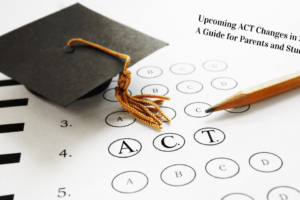
Using Banned Books to Inspire Readers
 It is human nature to want we are told we should not have. Adolescents in particular are intrigued by things that are “bad” or off-limits. Academically, we can use the “forbidden fruits” of literature to inspire readers. Banned and challenged books provide a unique opportunity to get young people outraged and, thus, excited and passionate about literature and reading. Harry Potter—yes, Harry Potter—has been frequently challenged due to allegations that it promotes Satanism and “wizardry.” What Potter-loving kid wouldn’t find that just a tad outrageous?
It is human nature to want we are told we should not have. Adolescents in particular are intrigued by things that are “bad” or off-limits. Academically, we can use the “forbidden fruits” of literature to inspire readers. Banned and challenged books provide a unique opportunity to get young people outraged and, thus, excited and passionate about literature and reading. Harry Potter—yes, Harry Potter—has been frequently challenged due to allegations that it promotes Satanism and “wizardry.” What Potter-loving kid wouldn’t find that just a tad outrageous?
Classroom staple and undisputed American classic To Kill a Mockingbird was one of the most challenged books of 2011. The Catcher in the Rye has been challenged pretty much every year since its publication. Include in this family of censored classics The Adventures of Huckleberry Finn, The Bluest Eye, The Color Purple, The Scarlet Letter, even the Bible. In addition to the classics, a slew of popular young adult books are challenged each year (Looking for Alaska by John Green—a hugely popular YA read— tops almost every list.) What is it about these books that makes them so threatening? Typical reasons for challenging or banning books include “sexual content, offensive language, Satanism, racism, violence, and religious viewpoint. Right or wrong, this practice presents a unique opportunity to get students involved in celebrating, exploring, researching, and reading these forbidden works. The American Library Association (ALA) even hosts “Banned Books Week” every fall. You can find more information and learn how to get involved here: http://www.ala.org/bbooks/bannedbooksweek
Additionally, the ALA provides a ton of online resources for parents, schools and teachers, from Banned Books Week “swag” to lists of the top ten banned books from the past few decades to lesson plans and ideas for teachers. Banned and challenged books can truly inspire. After all, what’s more tempting then the thing you’re not supposed to have?
Banned Books List to Aid in Student Tutoring
Here is a (short) list of frequently banned and challenged books (many of which you probably read in high school). Be assured that this represents only the tip of the iceberg. Complete lists and a wealth of other information can be found on the ALA’s banned books website: http://www.ala.org/bbooks/
A Farewell to Arms by Ernest Hemingway (Challenged at the Vernon-Verona-Sherill, NY School District in 1980 as a “sex novel.”)
Of Mice and Men by John Steinbeck (Removed from the Northside High School in Tuscaloosa, AL in 1989 because the book “has profane use of God’s name.”)
Invisible Man by Ralph Ellison (Retained in the Yakima, WA schools in 1994 after a five-month dispute over what advanced high school students should read in the classroom. Two parents raised concerns about profanity and images of violence and sexuality in the book and requested that it be removed from the reading list.)
A Separate Peace by John Knowles (Challenged in Vernon-Verona-Sherill, NY School District in 1980 as a “filthy, trashy sex novel.”)
To Kill a Mockingbird by Harper Lee (Challenged in Eden Valley, MN in 1977 and temporarily banned due to words “damn” and “whore lady” used in the novel.)
Harry Potter (series) by J.K. Rowling (Number one on the ALA’s list of the 100 most challenged books of 2000-2009.)
Written by Phil Lane



